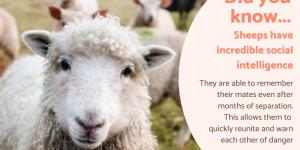Herbivorous Animals: Examples and Fun Facts

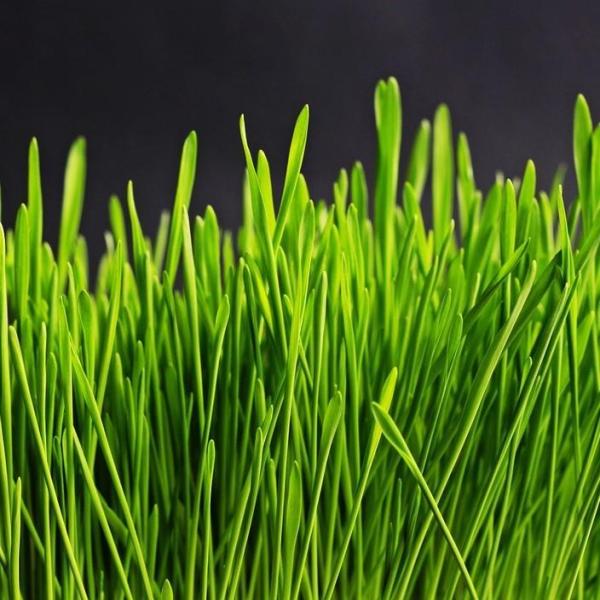
Are you looking for examples of herbivorous animals? Do you want to learn all about their classification?
This AnimalWised article will tell you about herbivores with the help of well-known examples, some more surprising ones, and a few fun facts. This way, you'll know all about their main characteristics, behavior and habits.
Remember that herbivorous animals are those that feed primarily on plants or algae, not only on grass. They are considered "primary consumers" in their food chain. Keep reading!
What is an herbivorous animal?
A herbivore is an animal that follows an exclusively vegetable diet, mainly consisting of plants, herbs or algae.
The fundamental component of vegetables is cellulose, which is a very complex carbohydrate. This carbohydrate is very difficult to digest. However, over the course of millions of years of evolution, nature has developed various strategies for its use.
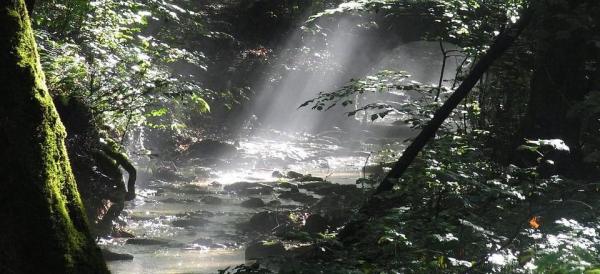
How do herbivores digest cellulose?
Herbivores can take advantage of cellulose through two actions or digestions. The first is mechanical digestion, which they achieve by crushing the plants with their set of flat teeth. Compare them, for instance, with the sharp fangs of carnivores like wolves.
The second digestion method of herbivorous animals comes down to the action of microorganisms found in their digestive system. These microorganisms are able to convert the cellulose into simpler products via fermentation; glucose is the main result.
What kinds of herbivores exist?
There are two large groups of herbivores: polygastric and monogastric. As their name suggests, the former are those that appear to have multiple stomachs. In fact, however, it is one stomach with three or four compartments that communicate with each other. Some of these stomach compartments have a high concentration of microorganisms which are capable of fermenting cellulose and turning it into "cud".
Herbivorous animals with stomach compartments are ruminants, most of which have cloven hooves - although not all animals with cloven hooves are ruminants, as is the case of pigs. Ruminant's teeth are quite important, because they are flat and there are no upper incisors.
Ruminants are able to regurgitate part of their gastric content so that they can chew it again. Some examples of polygastric ruminant herbivores include cows, goats, giraffes, sheep and deer. Here you can find a full list of ruminant animals, together with some fun facts.
Monogastric herbivores have one stomach, like we do, meaning fermentation takes place in another place in the digestive system. There is a great development of the cecum. It lies between the end of the small intestine and the start of the large intestine, developing considerably.
Monogastric herbivores cannot ruminate. Horses, for instance, have upper incisors (and a single hoof). Rabbits' teeth are also interesting; they have evolved to have continuously growing upper and lower incisors. The resultant product of the fermentation in the cecum of rabbits is expelled in their feces. These "special" feces are called "cecotrophs", and rabbits ingest them back again to profit from the nutrients they contain.
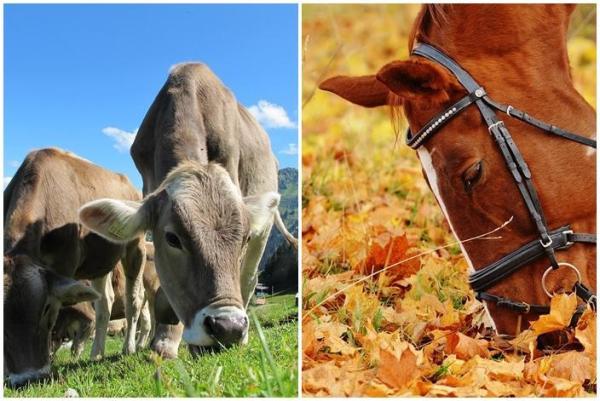
What are the most common traits of herbivores?
Most herbivorous animals live in groups or herds, that is they are gregarious.
They are primary consumers in the food chain, which means they are usually the prey of carnivorous animals. This is why their eyes are usually positioned on the sides of their heads; this allows them to see who or what is approaching them without turning their heads. They also have a common tendency for fleeing and being easily scared.

Monogastric herbivorous mammals
Equines
- Horses
- Donkeys
- Zebras
Rodents
- Hamsters
- Guinea pigs
- Chinchillas
- Capybaras
- Beavers
- Maras
- Coypus
- Pacas
- Porcupines
- Squirrels
Others
- Rhinos
- Giraffes
- Tapirs
- Rabbits
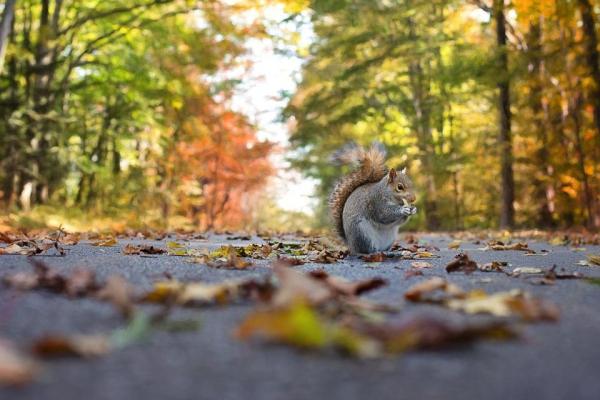
Polygastric / Ruminant herbivorous mammals
Bovines
- Cows
- Zebu
- Yaks
- Asian buffalos
- Wildebeests
- African buffalos
- Gazelles
- Bisons
Ovines
- Mouflons
- Sheep
Goats
- Domestic goats
- Iberian ibex
- Spanish wild goat
Deer
- Red deer
- Fallow deer
- Moose
- Reindeer
- Caribou
Camelids
- Camels
- Dromedaries
- Llamas
- Alpacas
- Vicuñas
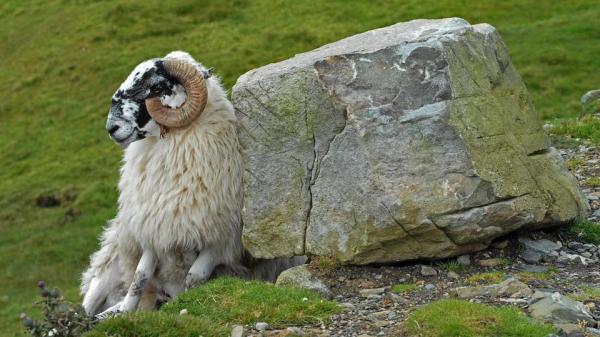
Other herbivores
While so far we've discussed mammals, there are many other herbivorous animals.
Amphibians
- Sirens (aquatic salamanders)
- Some tadpoles
Birds
- African gray parrots
- Amazon parrots
- Budgerigars
- Cockatoos
- Geese
- Lorikeets
- Macaws
Insects
- Ants
- Bush crickets
- Butterflies
- Caterpillars
- Grasshoppers
- Leafhoppers
- Moths
- Snails, slugs and earthworms (non-insect invertebrates)
- Treehoppers
Reptiles
- Green iguanas
- Tortoises
- Solomon Island skinks
This is our answer to what are herbivorous animals, together with some examples and fun facts. What is your favorite herbivore, the gentle giant diplodocus or the hard-working ant? Tell us in the comments section!
You may be interested in learning about granivorous animals, also known as seed predators, the different types of carnivorous animals, or about omnivorous animals, among which we can find humans!
If you want to read similar articles to Herbivorous Animals: Examples and Fun Facts, we recommend you visit our Facts about the animal kingdom category.




